
Online Learning for Kids: 8 Tools
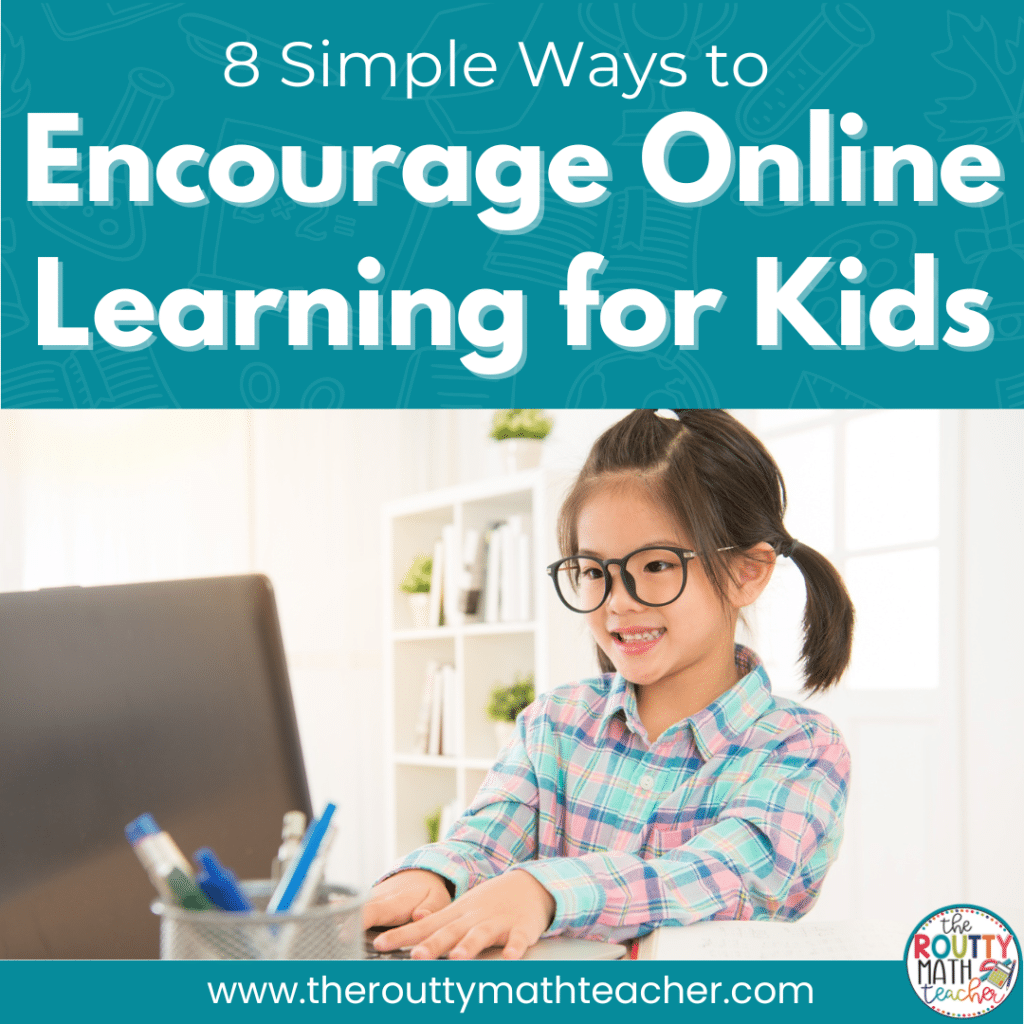
Let’s face it– there are times when we are not able to be face-to-face with our students. Whether we’re sick, they’re sick, or there’s been some unforeseen act of God, it’s good to have a back-up plan. In this post, I’m sharing 8 ways you can promote online learning for kids to help replace or extend your classroom instruction.
The unwelcome beeping of my alarm forced me to open my eyes.
I lay there motionless trying to center myself.
As I awoke to the new day, I realized something . . .
My mouth was dry and my throat was scratchy.
I couldn’t breathe– my nose was stuffy.
I grabbed a tissue and tried to unclog it . . . nothing.
My head was throbbing . . . it hurt every time I moved.
I swallowed hard.
Then, a wave washed over me . . . I was sick.
Time was of the essence. I knew what I had to do.
I picked up the phone and dialed the absence management system.
Then panic set in– what are my students going to do all day?
With a big state assessment looming, I did not have any time to waste.
I needed a plan . . . and fast.
Sure, I had an emergency substitute folder full of generic worksheets and activities, but I hadn’t looked at it again since filling it in the fall.
I needed the day to be meaningful– not just full of busywork.
I wondered . . . how could I teach my lesson from home?
Was it possible?
I raced to my computer, opened a slide deck, and started typing.
A New [Kind of] Way of Learning
We’ve all had a school day that starts this way. You have a lesson you need to teach and now you’re sick. You know you can’t go to school, but you want to ensure your students continue their learning without you.
It’s hard to plan for days like this but having some virtual learning tools in your toolbox can mean the difference between moving forward or being a step behind . . . like we need any more of these.
Over the years, I used online learning during math stations and to provide parents with resources to use with their students at home.
In fact, there have been days when I was sick at home or not feeling my best at school when I turned to online learning to help me do the job I was physically unable to do.
8 Tools to Support Online Learning for Kids
1. Google Slides
Google Slides, similar to PowerPoint but housed on the internet, allows you to create online slideshows. Creating an online learning presentation for your students is super easy with this tool. You can even use it to share learning activities such as a Fact or Fib slideshow where students can respond to a statement right on the slide.
2. Screencastify
Screencastify is a free online recording tool. After you download the Google Chrome extension, you can use the tool to “capture” your screen or record you talking to the camera. Screencastify is also a great way to narrate a Google Slides presentation for your students.
After creating the video, you can share it via Google Classroom or upload it to YouTube. Best of all, it’s free to use for videos of five minutes or less. Need more than five minutes? Divide your content into smaller chunks and create several videos for one lesson– which is better for your students’ attention spans.
3. Online Learning Games
At one time, I maintained a list of over 100 learning websites for math. Every time I ran across a new website or game, I added it to my class webpage. These games were then accessible to my students during math stations or at home. In fact, I referenced specific games in my classroom newsletter to strengthen the school-to-home connection and help parents support their students’ learning at home.
While many of the websites are no longer available, a quick Google search for your topic, “[topic or skill] online games”, will bring up a good number of activities. In fact, some games, like the ones on Math Playground can be uploaded directly to Google Classroom and assigned to students.
4. Learning Videos and Tutorials
With the popularity of flipped classrooms, many teachers already use online video platforms, such as Khan Academy and BrainPop, to support student learning both in the classroom and at home. While the videos may not teach the content in the same way as you, they are great resources to use when you need a quick video to share with your students. To support students outside the classroom, you can always send instructions about certain examples to watch, or not watch, depending on your students’ needs.
5. Digital Activities
Digital activities, much like the activities students complete with their hands, are accessible on the computer. From task cards and drag and drop activities to online quizzes, students can do the same learning activities they do in the classroom with a computer or a tablet at home. Popular learning platforms, like Google Classroom and Seesaw, give teachers many more ways to share these activities with their students.
Click this link to see a digital learning activity in action!
Boom Learning, a newer platform, allows students to complete digital task cards via their website. Note: The cards aren’t as interactive as some of the other digital activities but another way to provide online learning for kids.
6. Standards-Based Learning Websites- IXL Math
I mentioned online learning games earlier; however, I wanted to create a specific category for a super cool site– IXL Math. This site has hundreds of skill-building, interactive, online learning for kids. I’ve used this website for years and my students love it!
Full disclosure, as many of you know, I am a huge proponent of conceptual-based learning and critical thinking. This site does not do a stellar job of either, but it’s a great skill builder. If you’re looking for meaty word problems, this is not the best resource. On the other hand, it’s perfect for practicing basic skills, such as place value, the order of operations, operations with whole numbers, fractions, and decimals, converting units of measure, graphing or measuring angles.
Even better, for my fellow Texas friends, they have an alignment page where you can find skills linked to the TEKS— just keep in mind my warning about the lack of rigor.
I use this site every year when preparing for our state assessment. In fact, it’s part of my two-week Great Math Race, like The Amazing Race, I do with my kids. Teachers can request a free 30-day trial. This allows you to assign accounts to 30 students– which gives each student individual access to the site to use as often as they like. You can even track their usage and performance data through the platform’s monitoring tools.
Alternately, students can complete 10 problems a day, on a single device, without an account.
Note: Please be sure to adhere to your school/district’s acceptable use and privacy guidelines as you may need to use aliases for your students instead of using their real names to create accounts.
7. Google Classroom
This Google learning tool allows teachers to create a virtual online learning platform for their students. You can create and post assignments, share videos and resources, and review student work. The possibilities are endless! Imagine creating an assignment that includes a standards-based video to watch, online games and tutorials to practice, and an online quiz to assess student learning. Then you press a button to share it with your students all at once! Google Classroom has amazing capabilities to connect with our students and organize learning materials.
There is some learning to do on both the teacher and student side to understand how it works, but spending an hour or so checking it out is all you need to do to use it successfully. If Google Classroom is new for your students, I recommend creating a video, or series of videos, using Screencastify to show them how to access assignments; however, Google Classroom does send an email to students with the assignment linked once uploaded by the teacher.
8. Zoom
Zoom is an excellent resource for live video conferencing if you need to host an online learning session remotely– how cool would this be for your students! It has a variety of tools to create an interactive experience where students can ask questions live during the meeting.
Many of our students are not used to learning in this way, so there’s a bit of a learning curve. Create a quick video to walkthrough video conferencing etiquette and use a screen share to walk through the tools. There’s a free plan that allows up to 100 students to join in for a 40-minute video conferencing session.
A New Set of Learning Tools
After spending an hour– you know how it is, it’s easier just to go to school– putting together a PowerPoint slideshow for the substitute to share with my students, I was able to rest and take care of myself knowing the day would not be wasted.
Even though I wasn’t able to talk to my students, I connected with them via the notes and hints I added to the slides. What a genius idea– one I had never considered before; but, desperate times call for desperate measures. I needed to be at home resting AND learning needed to continue. This solution allowed me to accomplish both.
Using technology and preparing online learning for kids is uncharted territory for many people. It’s okay! Rest assured, the internet has many tools to help get the job done if and when we can’t– just don’t let technology do too good of a job . . . job security is essential these days. 😉
Ready to get started with Online Learning for Kids?
Use the form below to download my free “Online Math Learning Cycle- Planning Guide” to help you organize your lessons and assignments.
Sound Off!
What have you done, or will you do, to create online learning for kids? Respond in the comments below.
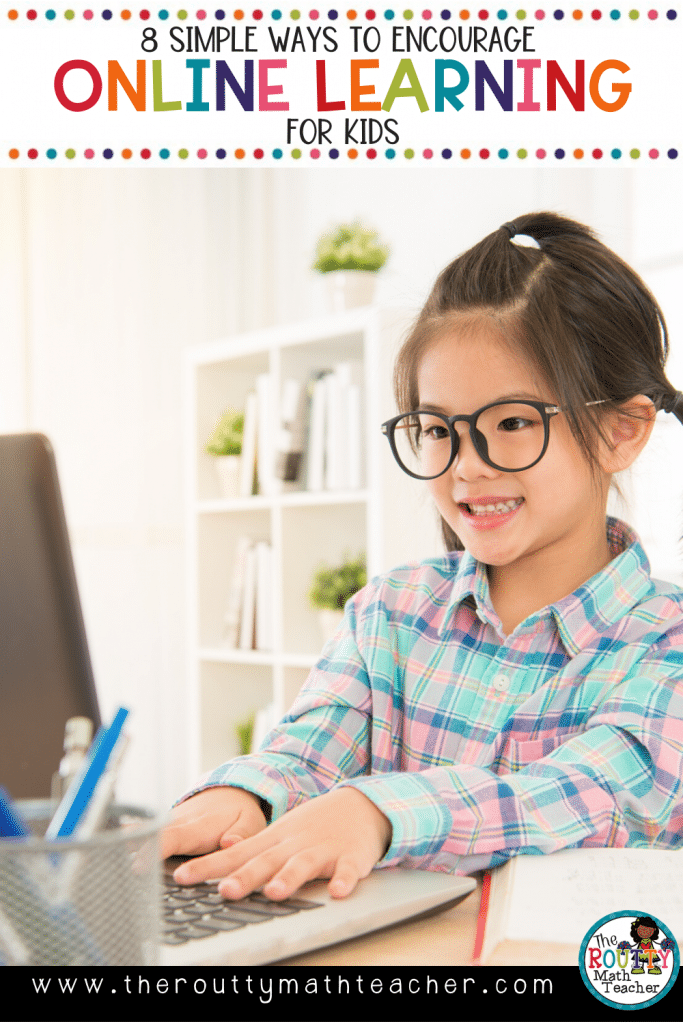
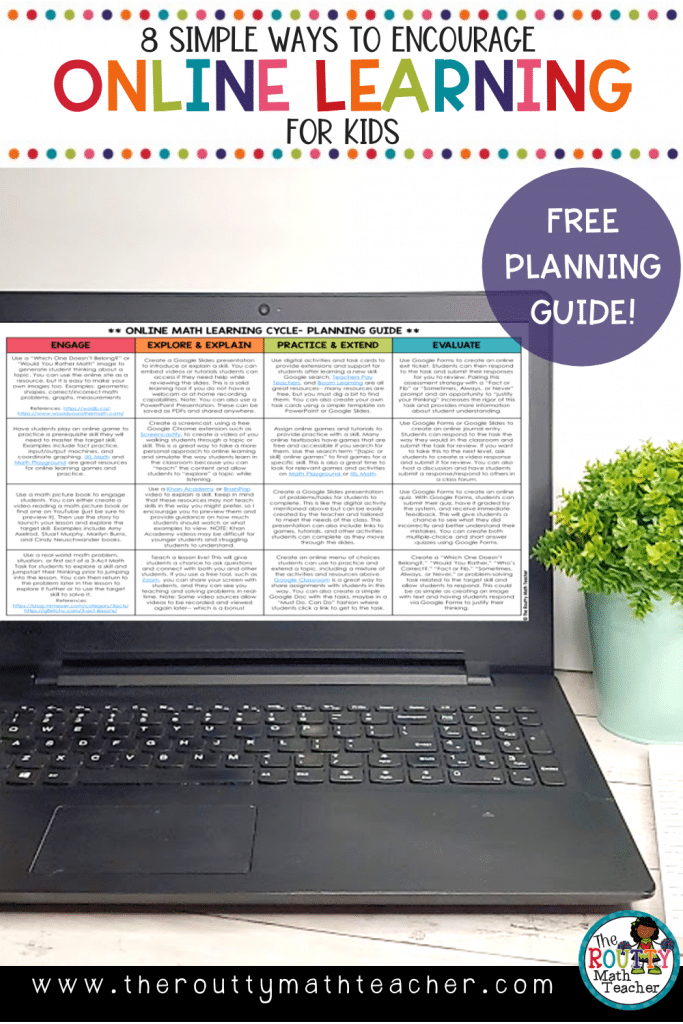



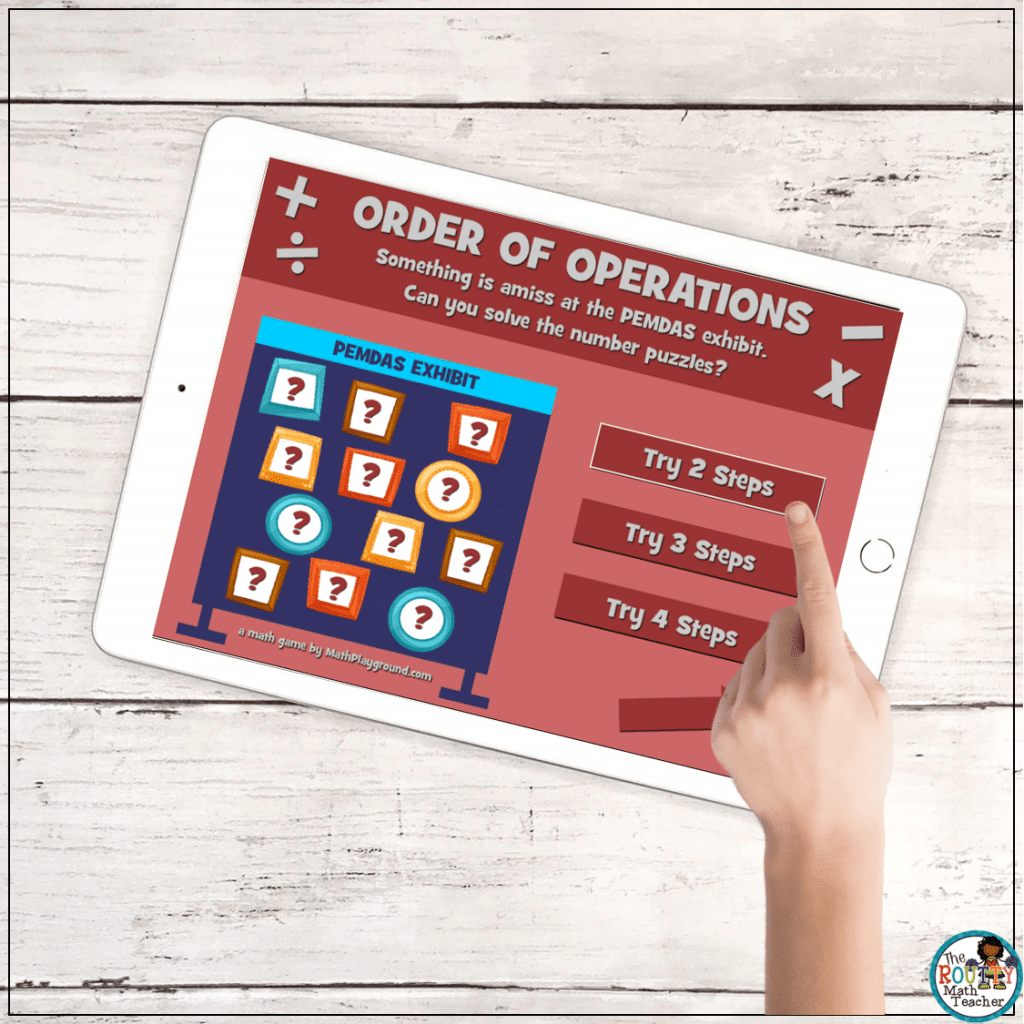
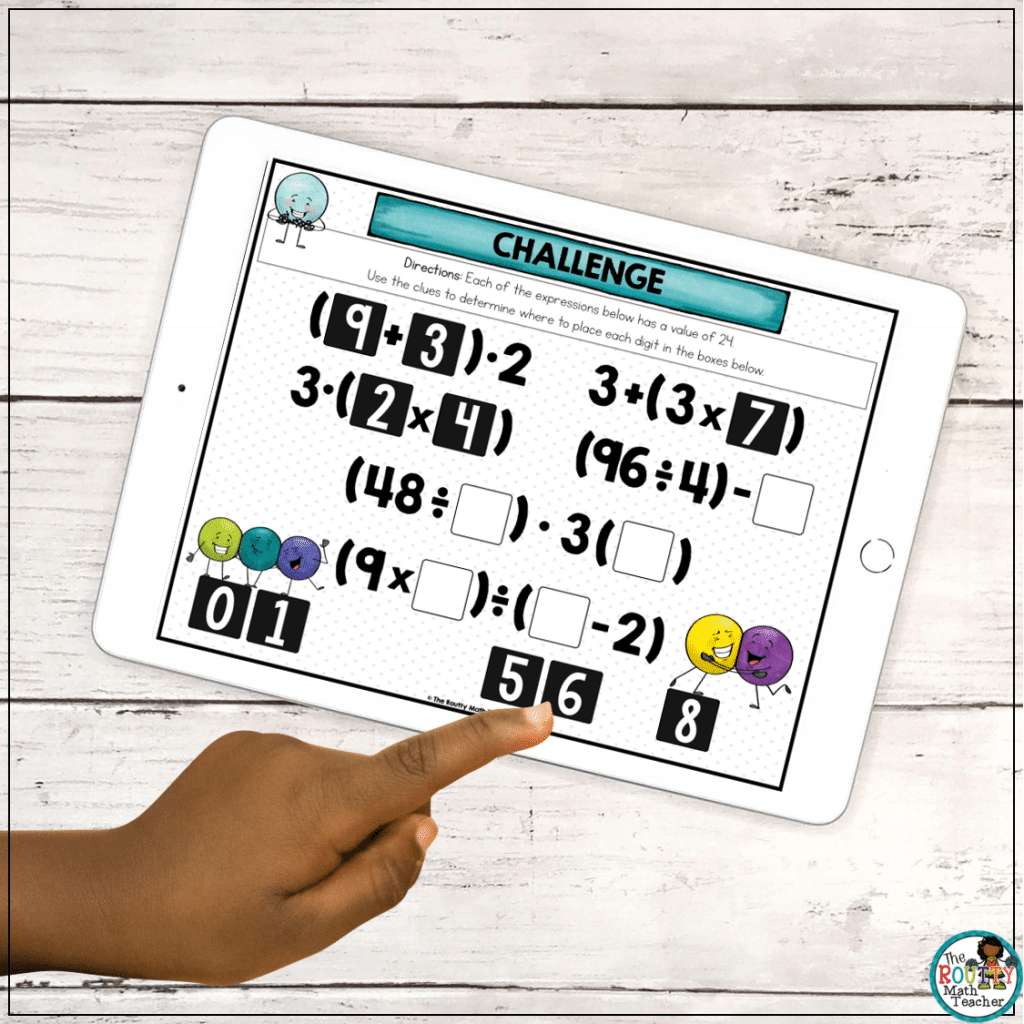

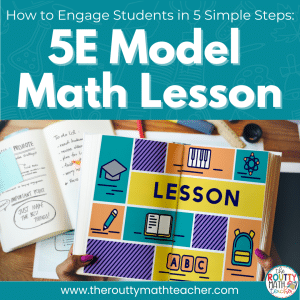
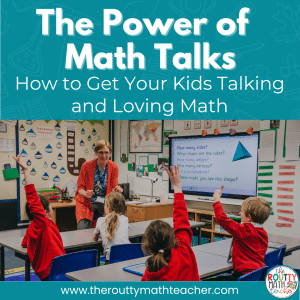
6 Responses
I created a classroom website where my kinders could access videos of me teaching various lessons each day. I also provided links to stories online, and our favorite movement breaks, so parents could see how to proceed with each learning area. I kept our weekly theme format and shared ideas for creative projects related to our learning.
Hi Cindy! Wow! Sounds like you set-up a great learning environment for your Kinders. I love how accessible you made everything and created a space that was usable for parents. I’m so impressed! Thank you for sharing!
Hi!
I’d like to have the download for your Online Math Learning Cycle- Planning Guide.
Thanks!
Hi Jayne! You can use the form at the bottom of the post to access the download.
Please send Online Math Learning Cycle- Planning Guide
Hi Diane! There should be a form at the bottom of the blog post where you can grab the planning guide; however, I’ve recently learned there is a glitch on mobile and the form is not showing up. If you do not see the form, please head over to https://the-routty-math-teacher.ck.page/online-math-planning-guide to download the planning guide. If you are still unable to access the guide, please email me at [email protected]. Thank you!
Shametria